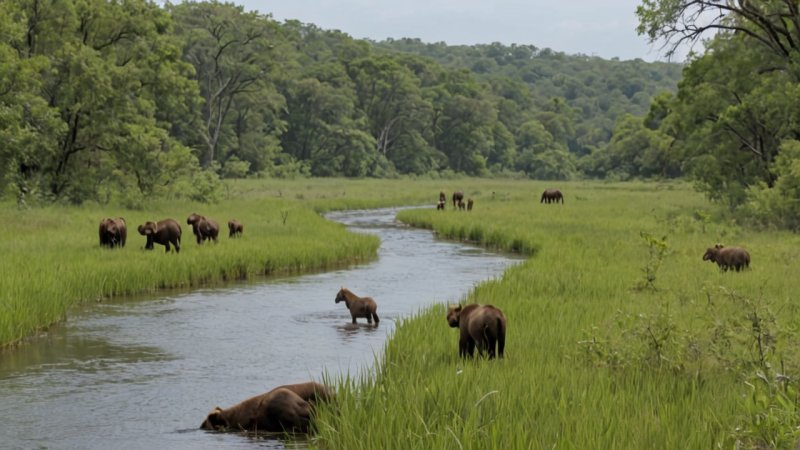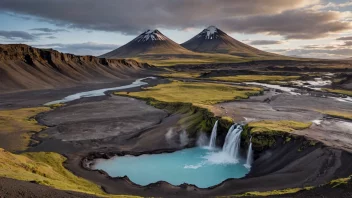Traveling to areas with wildlife can be one of the most exhilarating experiences, offering breathtaking views and unique encounters with nature. However, it also comes with its own set of challenges and risks. Understanding how to navigate these environments safely is crucial for any traveler. In this guide, we will explore key strategies for ensuring your safety while enjoying the beauty of wildlife-rich areas, covering everything from preparation and awareness to specific tips for different types of wildlife.
Understanding Wildlife Behavior
Before venturing into wildlife areas, it's essential to familiarize yourself with the behavior of the animals you might encounter. Different species have varying reactions to human presence, and understanding these behaviors can significantly reduce the risk of dangerous encounters.
Predators and Herbivores
Predatory animals like bears and big cats are often perceived as the most dangerous; however, herbivores can also pose risks. For example, elephants and moose can become aggressive if they feel threatened or cornered. Here are some general behaviors to keep in mind:
- Predators: Often curious but can become aggressive if they feel threatened.
- Herbivores: May charge if they perceive danger to their young or themselves.
Signs of Distress
Recognizing signs of distress in wildlife can help you avoid dangerous situations. Animals may display behaviors such as:
- Shaking their heads or pawing at the ground (indicating aggression)
- Vocalizations (growls, snorts, etc.)
- Staring or standing still (often a warning sign)
Preparation is Key
The first step to staying safe in wildlife areas is thorough preparation. This section will cover what you need to do before you even step foot in the wilderness.
Research the Area
Different regions have different wildlife and guidelines for safety. Research the specific area you are visiting:
- Identify the types of wildlife present.
- Understand local regulations regarding wildlife encounters.
- Check for any alerts or warnings from local authorities.
Pack the Right Gear
Your gear can make a significant difference in your safety. Consider packing:
- Bear spray: If you are in bear country, this can deter an aggressive bear.
- First aid kit: Always have a basic first aid kit handy.
- Whistle: A whistle can alert others if you’re in trouble.
Travel with a Guide
For those unfamiliar with wildlife areas, hiring a local guide can enhance safety. A guide can provide insight into the environment and help you navigate potential dangers.
During Your Trip: Staying Vigilant
Once you are in the area, maintaining awareness is crucial. Here are some strategies to enhance your safety:
Stay on Designated Trails
Straying off marked paths increases your risk of unexpected encounters. Stick to designated trails to minimize your chances of surprising wildlife.
Make Noise
While it may seem counterintuitive, making noise can help you avoid startling animals. Talking, singing, or clapping can alert wildlife to your presence, giving them a chance to move away.
Observe from a Distance
Always respect wildlife by observing from a safe distance. Use binoculars or cameras with zoom lenses to appreciate animals without getting too close.
Specific Tips for Different Wildlife
Every species has its own characteristics and associated risks. Here are some specific tips for dealing with various animals:
Bears
When in bear territory, keep the following in mind:
- Store food securely in bear-proof containers.
- Travel in groups, as bears are less likely to approach larger groups.
- If you encounter a bear, stay calm and back away slowly without turning your back on the animal.
Snakes
To avoid snake encounters:
- Wear sturdy boots and long pants.
- Watch where you step and place your hands.
- If you encounter a snake, remain calm and slowly back away.
Moose
Moose can be unpredictable. Here are some tips:
- Keep a safe distance, especially during mating season.
- Never put yourself between a moose and water.
- Be aware of your surroundings, as moose often blend into their environment.
Emergency Protocols
No matter how well you prepare, accidents can happen. Having a plan in place can make all the difference during an emergency.
Know the Emergency Numbers
Familiarize yourself with local emergency contacts and services, including:
- Park rangers or local wildlife authorities.
- Local hospitals or clinics.
Have a Communication Plan
In remote areas, cell service may be limited. Consider carrying:
- A satellite phone or a personal locator beacon.
- A map and compass as backup navigation tools.
First Aid Knowledge
Basic first aid knowledge can be invaluable. Consider taking a wilderness first aid course to prepare for potential injuries.
Conclusion
Enjoying wildlife-rich areas can be a rewarding experience, provided you prioritize safety. By understanding animal behavior, preparing adequately, and staying vigilant during your travels, you can minimize risks and create unforgettable memories. Remember, respecting wildlife and their habitats is crucial not only for your safety but also for the preservation of these magnificent creatures for future generations.






